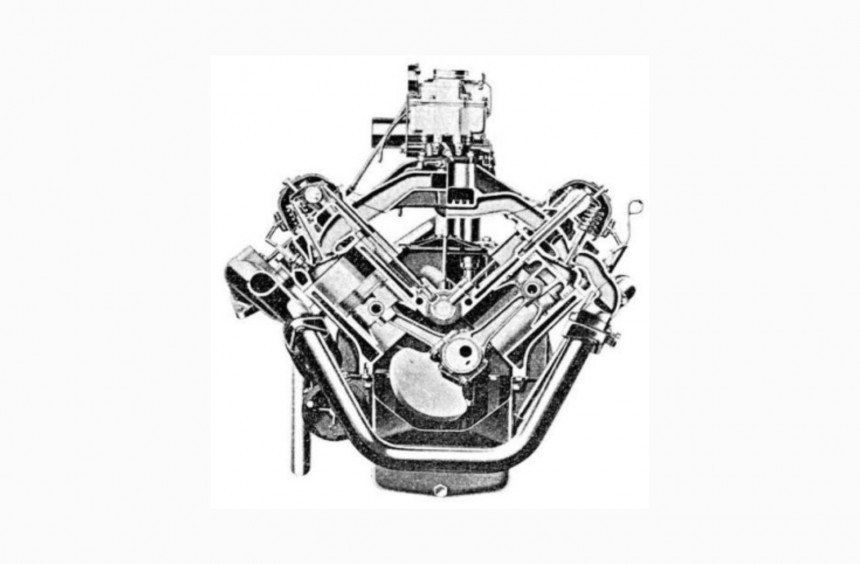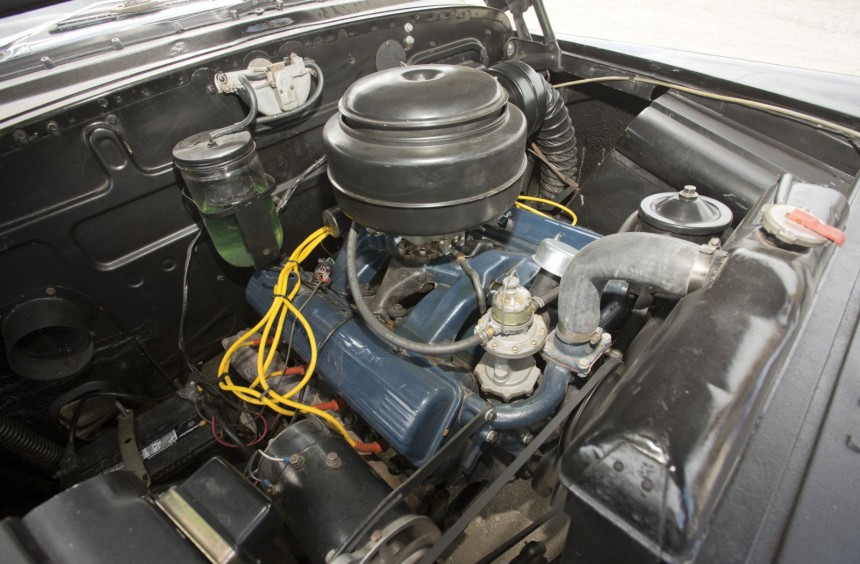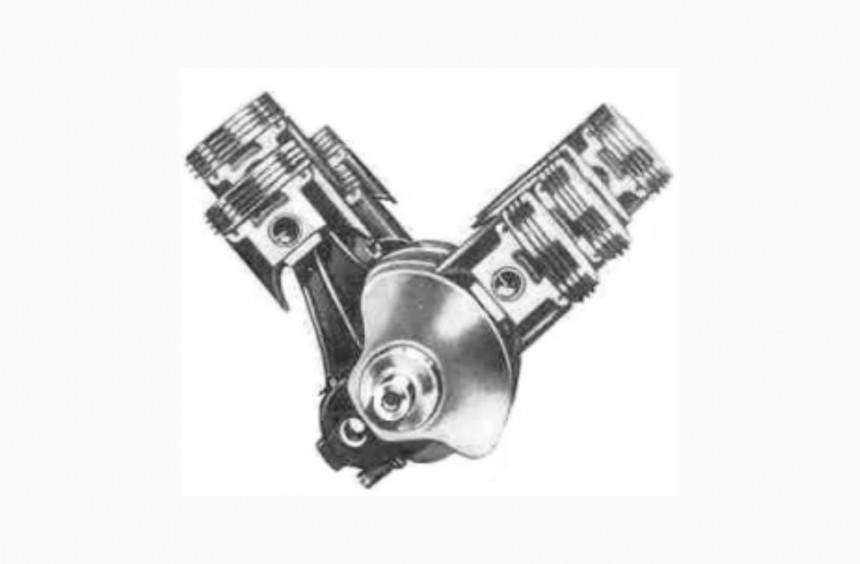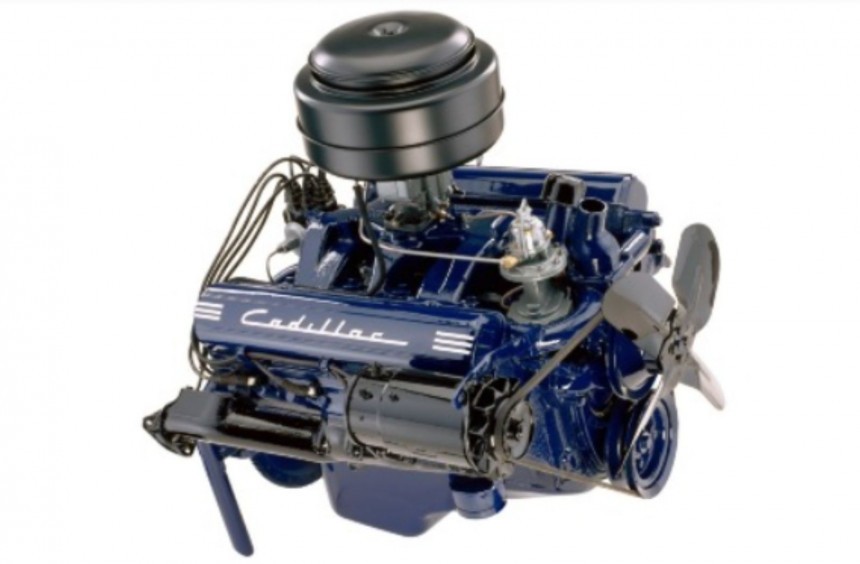Though V8s had been mass-produced since 1915, Cadillac's 1949 331-ci (5.4-liter) OHV was a tremendous leap forward that set the standard for the next fifty years.
One of the most popular configurations in the history of the combustion engine, the V8, was born in 1904. Designed by French engineer Léon Levavasseur and built by a manufacturer called Antoinette, it was initially used for speedboat racing, and several years later, it transitioned to airplanes.
But several months after the Antoinette V8 debuted, carmakers Renault and Buchet also began producing V8s for race cars.
Only one decade later, many carmakers were developing their own V8 engines. In the US, Cadillac started production of the L-head, a unit that went down in history as the first mass-produced V8 designed for road-going automobiles.
The L-head was continually improved for the next twenty years, but as it began showing its limits, Cadillac started to make plans for a successor.
The development of an advanced OHV V8 that could replace the aging L-head began during the late 1930s, but when the US joined the Second World War, the project had to be halted as the focus shifted towards aiding the war effort.
Nevertheless, the advancements made during the war years, particularly when it came to refined fuels, would trickle down to the automotive industry in the following decades, influencing the future of Cadillac's new V8.
After the war ended, the GM division resumed its ambitious project, which was handed down to a team that included engineering masterminds Jack Gordon, Ed Cole, Byron Ellis, and Harry Barr.
The first functional prototypes were built in 1946, leading to the final design, which was extensively tested, raking up over 1,000,000 miles (1,609,344 km) before it was put into full-scale production.
Introduced in 1948, the first all-new postwar Cadillacs with their Lockheed P-38 fighter plane-inspired tail fins were not just a leap forward in terms of design thanks to the vision of the legendary Harley Earl.
For the 1949 model year, the cars received the long-awaited L-head replacement, a 331-ci (5.4-liter) that was soon recognized as the most technologically-advanced V8 in the world.
Boasting an overhead-valve (OHV) layout with more efficient combustion chambers, the new unit, which shared almost no commonalities with its predecessor, was sensibly lighter, more powerful, and more fuel efficient.
Apart from the valve-in-head layout, the new V8 introduced many state-of-the-art improvements, making it a trendsetter for the next five decades.
Tipping the scales at 663 pounds (300.7 kg), the OHV was nearly 200 pounds (90.7 kg) lighter than the 346.
Additionally, it was built around a sensibly more compact cast iron block with five mains (instead of the three of the comparable 346 L-head). The innovative powerplant boasted larger cylinder bores and a much shorter stroke that significantly reduced piston speed (and thus friction), improving its overall thermal efficiency.
Slipper pistons were another critical feature that helped engineers produce a compact package. The brainchild of GM engineer Byron Ellis, these pistons featured scalloped skirts that allowed them to "slip" between the crankshaft counterweights, reducing the crankshaft-to-top-of-the-block proportions. This enabled engineers to design shorter, lighter connecting rods and reduce the cylinder decks' size.
Byron Ellis was also responsible for developing the hydraulic valve lifters that helped the new engine become one of the quietest V8s on the market.
As I mentioned before, the increasing quality of airplane fuels during the Second World War would trickle down to the automotive industry. Though higher octane gasoline was still years away when this V8 was introduced, Cadillac predicted its arrival, which is part of the reason why its engineers went for the OHV design.
Therefore, the engine's architecture could withstand compression ratios of up to 12:1. However, when the 331 came out, its ratio was lowered to a modest 7.5:1.
Nevertheless, the engine was rated at 160 hp and 312 lb-ft (423 Nm) of torque, making it one of the most powerful US-built production V8s. It was a popular choice among motorsport enthusiasts like Briggs Cunningham, who entered two OHV V8-powered Cadillacs at Le Mans in 1950. Both cars finished the race 10th and 11th, respectively. It also became one of the top choices for early hot rodders, as you can see in the YouTube video below by IronTrap Garage.
By the mid-1950s, most of Detroit's carmakers, big and small, were developing their own short-stroke, overhead-valve V8s. This recipe became the norm for the next fifty years and triggered a horsepower war that gave birth to some of the most legendary V8 engines ever built.
Cadillac's OHV was continually improved for the following decades, increasing in displacement and power. With the same basic architecture, the 390-ci (6.4-liter) Tri-power version in the 1958 Eldorado could make no less than 325 hp.
Redesigned Cadillac powerplants that used the same OHV principle with modern tech continued to be developed well into the 1990s. The last great series of V8s produced by Cadillac (albeit with help from Oldsmobile's R&D department) was the all-aluminum DOHC Northstar series produced until the late-2000s.
But several months after the Antoinette V8 debuted, carmakers Renault and Buchet also began producing V8s for race cars.
Only one decade later, many carmakers were developing their own V8 engines. In the US, Cadillac started production of the L-head, a unit that went down in history as the first mass-produced V8 designed for road-going automobiles.
The L-head was continually improved for the next twenty years, but as it began showing its limits, Cadillac started to make plans for a successor.
A design that originated in the second part of the 1930s
Nevertheless, the advancements made during the war years, particularly when it came to refined fuels, would trickle down to the automotive industry in the following decades, influencing the future of Cadillac's new V8.
After the war ended, the GM division resumed its ambitious project, which was handed down to a team that included engineering masterminds Jack Gordon, Ed Cole, Byron Ellis, and Harry Barr.
The first functional prototypes were built in 1946, leading to the final design, which was extensively tested, raking up over 1,000,000 miles (1,609,344 km) before it was put into full-scale production.
A huge leap forward
For the 1949 model year, the cars received the long-awaited L-head replacement, a 331-ci (5.4-liter) that was soon recognized as the most technologically-advanced V8 in the world.
Boasting an overhead-valve (OHV) layout with more efficient combustion chambers, the new unit, which shared almost no commonalities with its predecessor, was sensibly lighter, more powerful, and more fuel efficient.
A host of standard-setting advancements
Tipping the scales at 663 pounds (300.7 kg), the OHV was nearly 200 pounds (90.7 kg) lighter than the 346.
Additionally, it was built around a sensibly more compact cast iron block with five mains (instead of the three of the comparable 346 L-head). The innovative powerplant boasted larger cylinder bores and a much shorter stroke that significantly reduced piston speed (and thus friction), improving its overall thermal efficiency.
Slipper pistons were another critical feature that helped engineers produce a compact package. The brainchild of GM engineer Byron Ellis, these pistons featured scalloped skirts that allowed them to "slip" between the crankshaft counterweights, reducing the crankshaft-to-top-of-the-block proportions. This enabled engineers to design shorter, lighter connecting rods and reduce the cylinder decks' size.
Byron Ellis was also responsible for developing the hydraulic valve lifters that helped the new engine become one of the quietest V8s on the market.
Revolutionizing V8 design in the Motor City
Therefore, the engine's architecture could withstand compression ratios of up to 12:1. However, when the 331 came out, its ratio was lowered to a modest 7.5:1.
Nevertheless, the engine was rated at 160 hp and 312 lb-ft (423 Nm) of torque, making it one of the most powerful US-built production V8s. It was a popular choice among motorsport enthusiasts like Briggs Cunningham, who entered two OHV V8-powered Cadillacs at Le Mans in 1950. Both cars finished the race 10th and 11th, respectively. It also became one of the top choices for early hot rodders, as you can see in the YouTube video below by IronTrap Garage.
By the mid-1950s, most of Detroit's carmakers, big and small, were developing their own short-stroke, overhead-valve V8s. This recipe became the norm for the next fifty years and triggered a horsepower war that gave birth to some of the most legendary V8 engines ever built.
Cadillac's OHV was continually improved for the following decades, increasing in displacement and power. With the same basic architecture, the 390-ci (6.4-liter) Tri-power version in the 1958 Eldorado could make no less than 325 hp.
Redesigned Cadillac powerplants that used the same OHV principle with modern tech continued to be developed well into the 1990s. The last great series of V8s produced by Cadillac (albeit with help from Oldsmobile's R&D department) was the all-aluminum DOHC Northstar series produced until the late-2000s.















